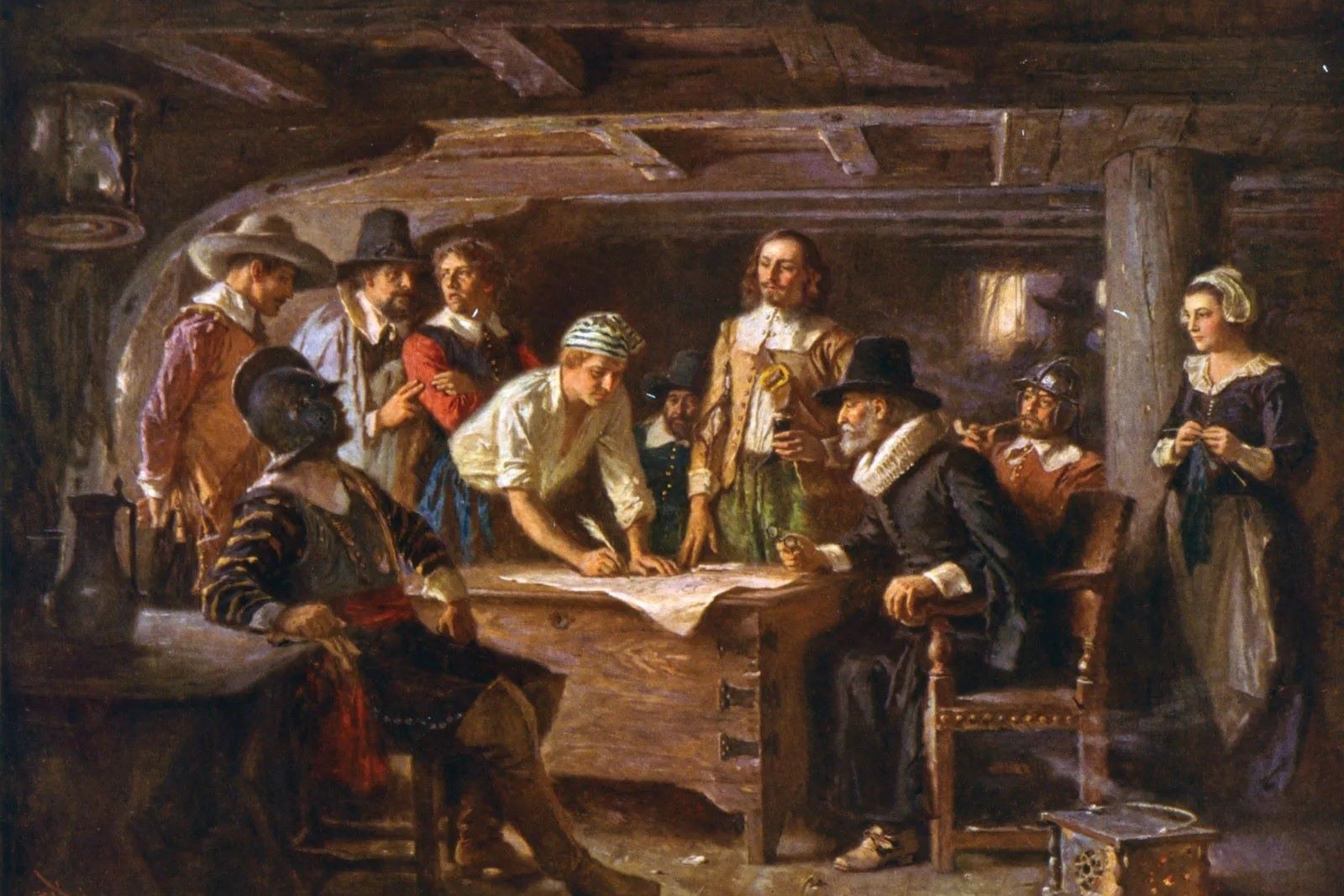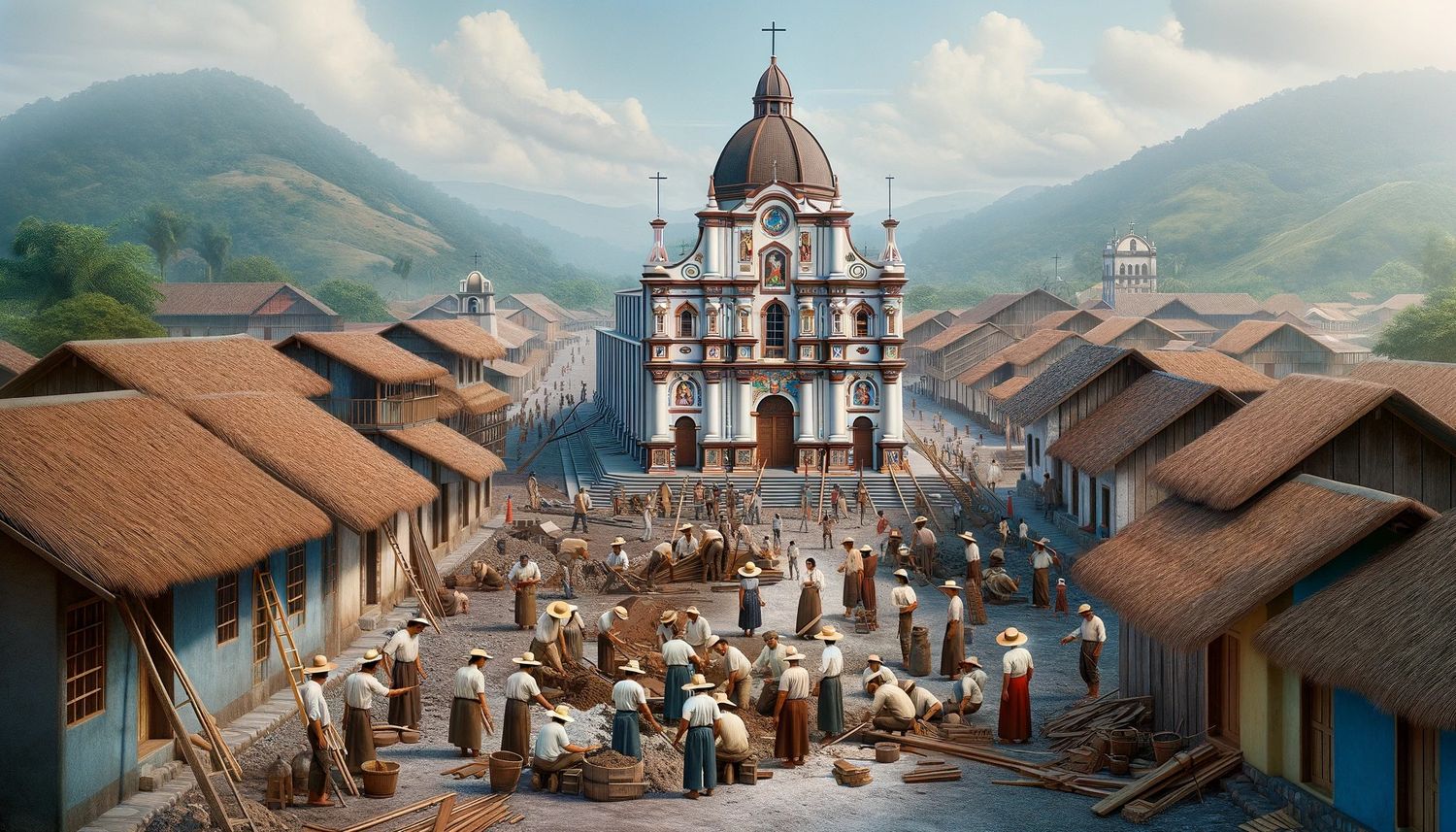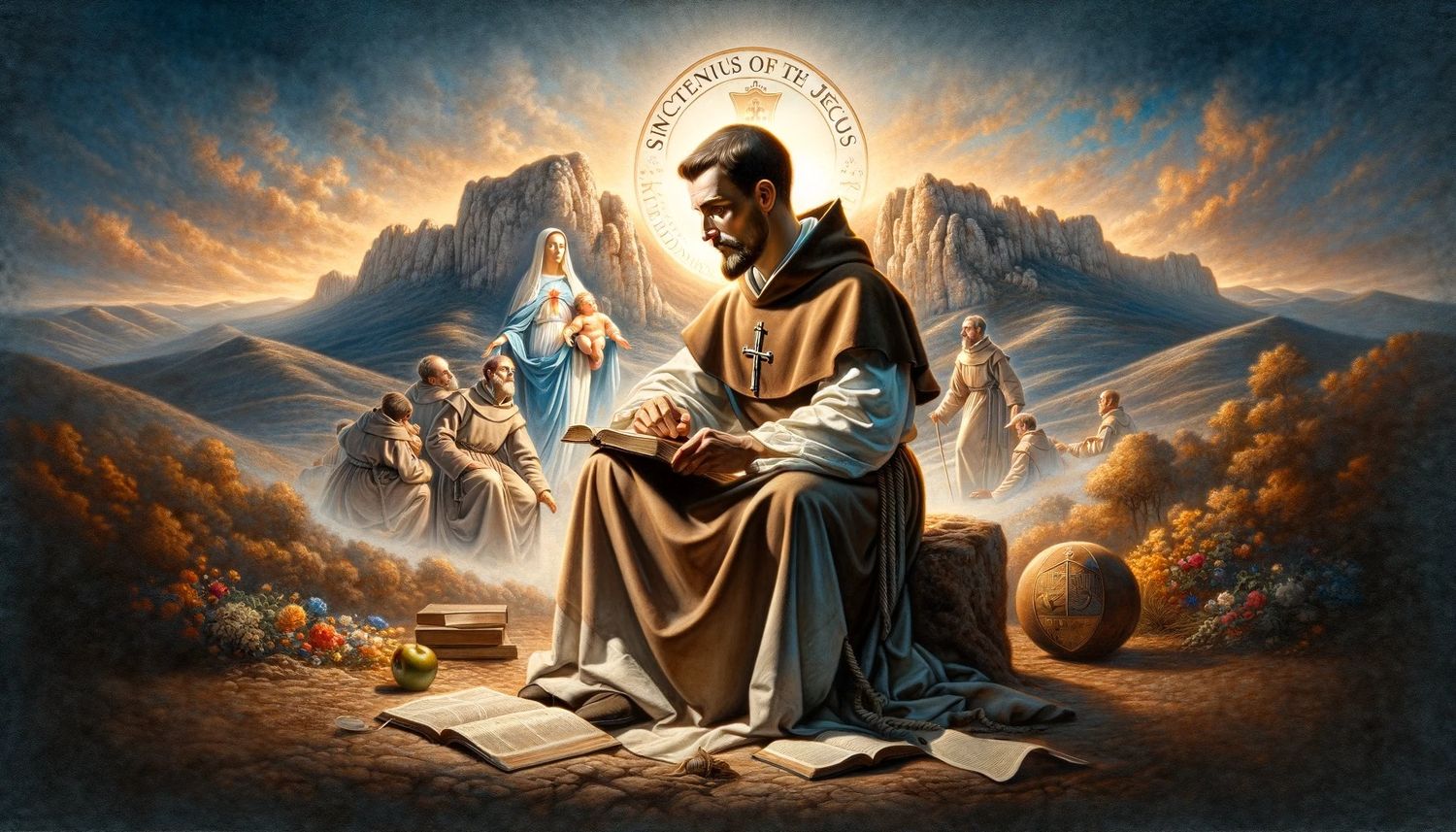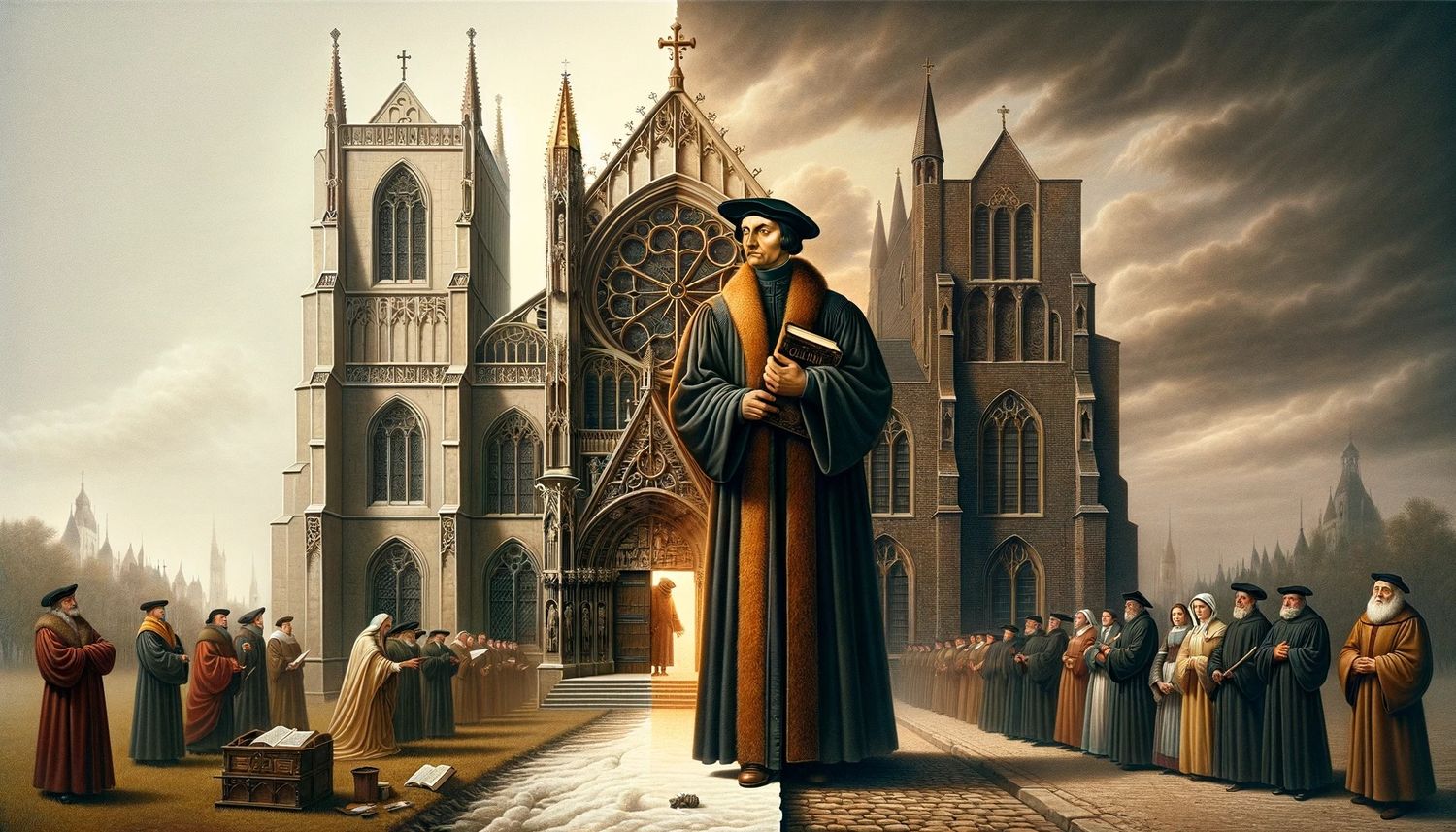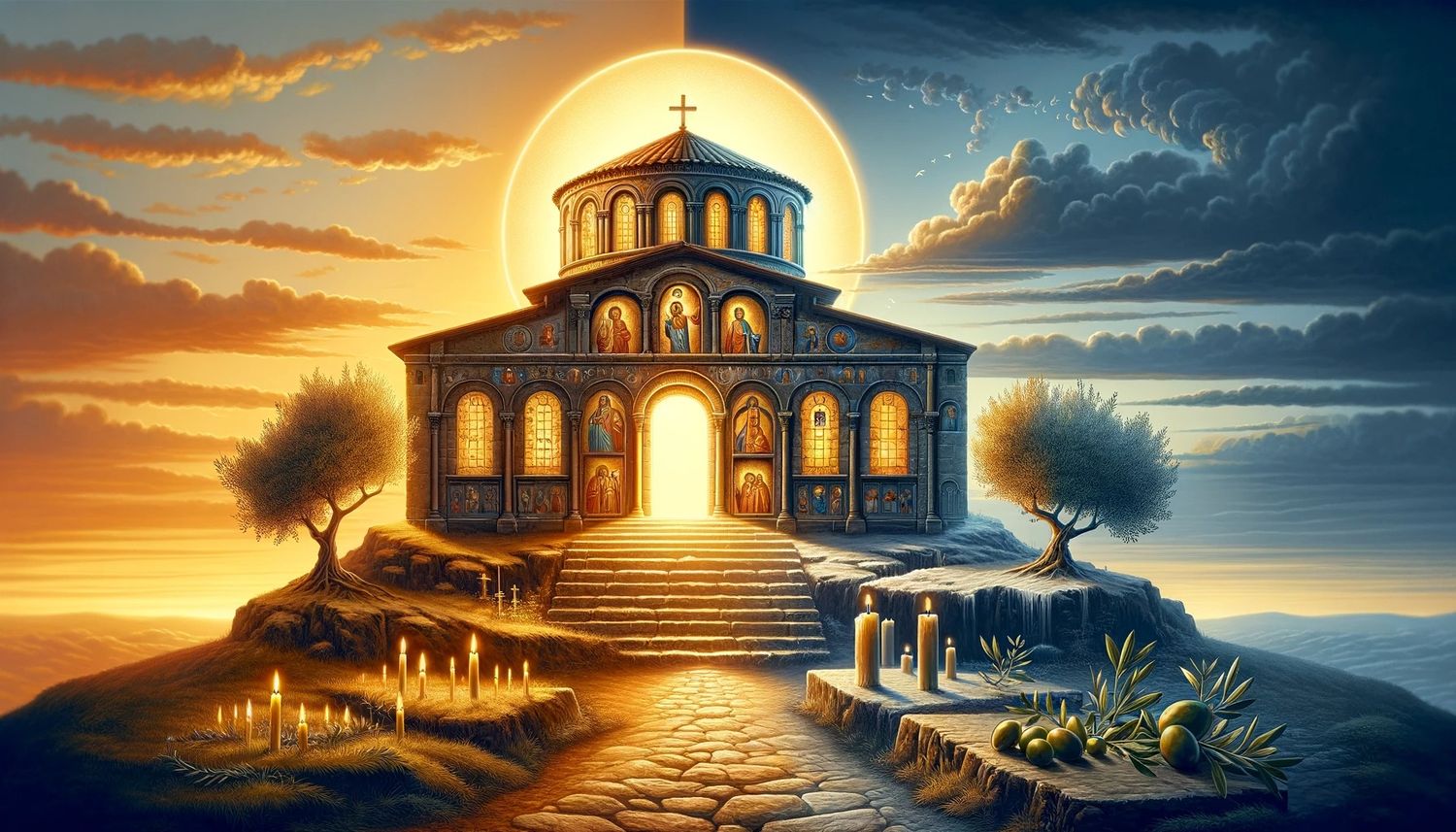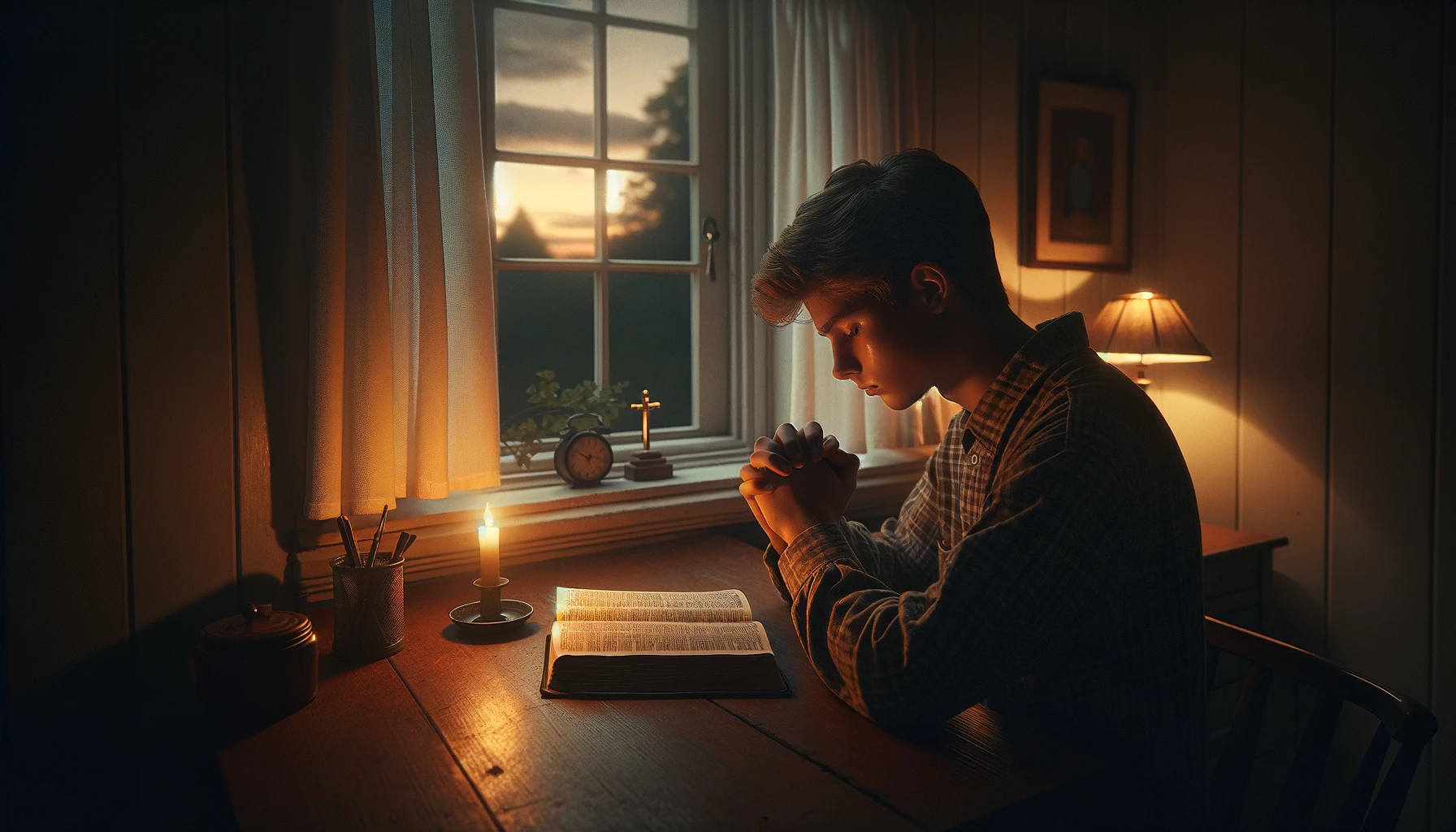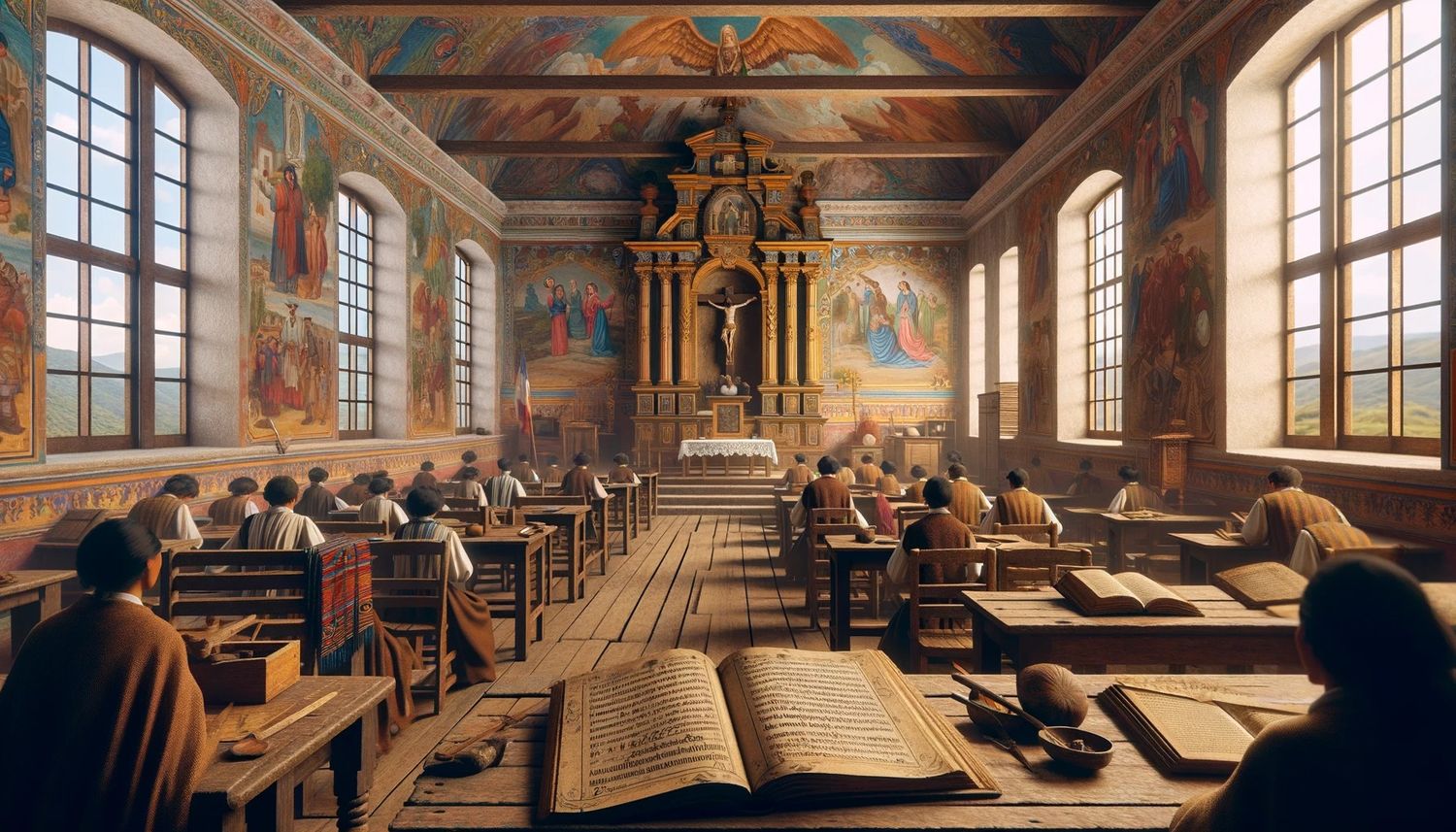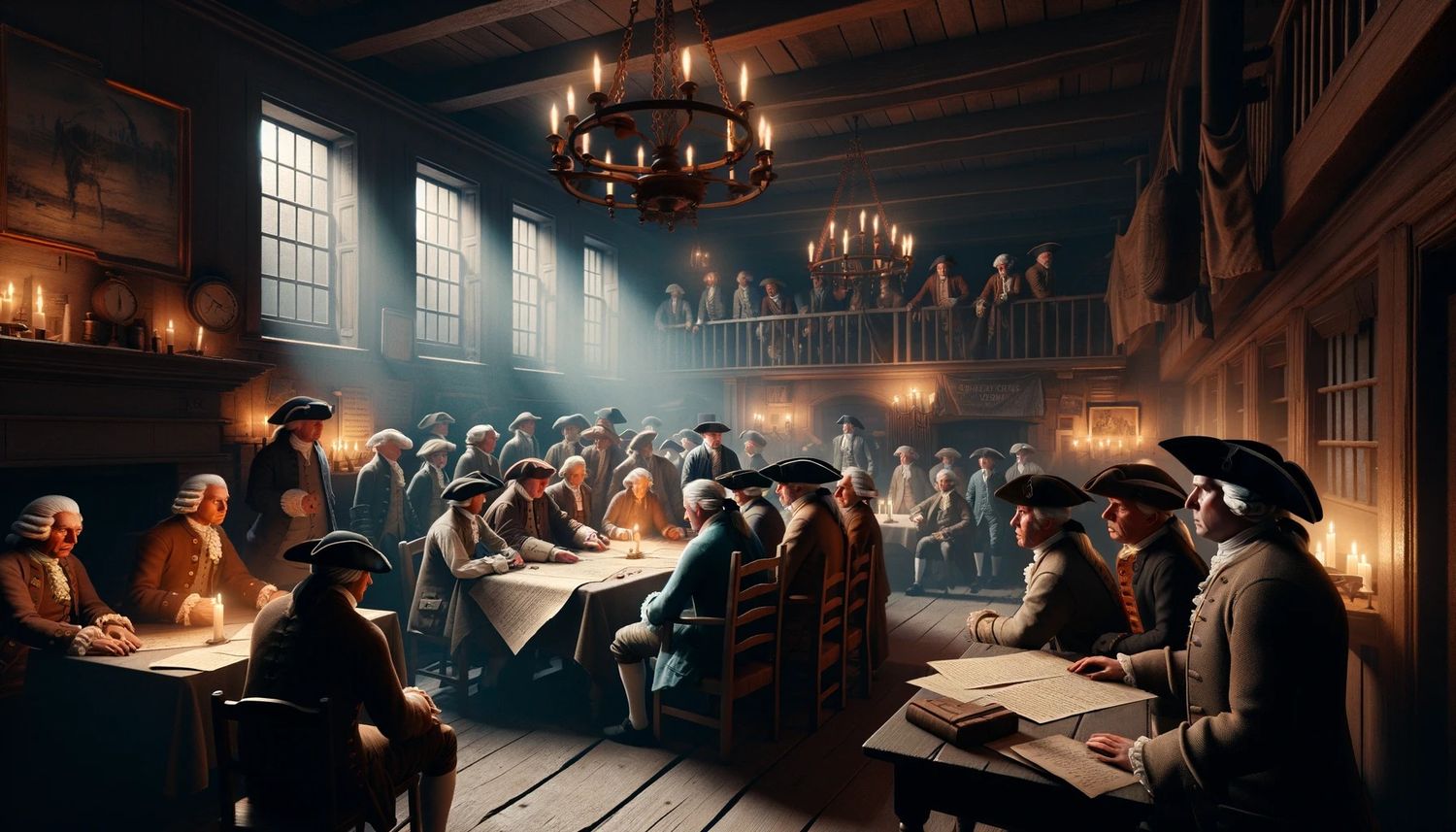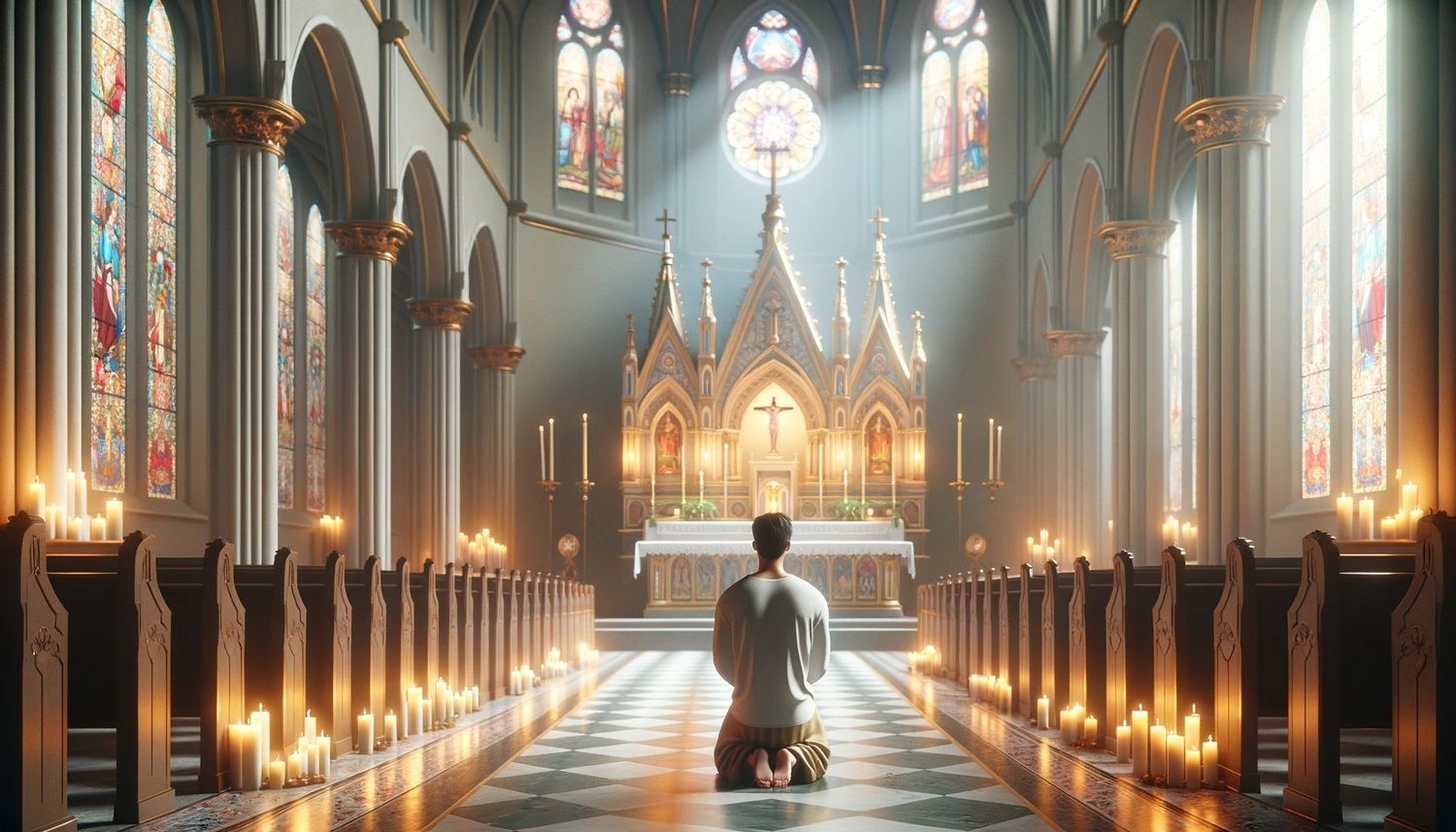Home>Theology and Spirituality>How Did Catholicism First Come To The Colonies


Theology and Spirituality
How Did Catholicism First Come To The Colonies
Published: February 15, 2024
Peter Smith, Editorial Director at Christian.net, combines deep insights into faith, politics, and culture to lead content creation that resonates widely. Awarded for his contributions to religious discourse, he previously headed a major organization for religious communicators, enhancing dialogue on faith's societal impacts.
Discover the origins of Catholicism in the American colonies and its impact on theology and spirituality. Explore the historical journey of Catholicism in the New World.
(Many of the links in this article redirect to a specific reviewed product. Your purchase of these products through affiliate links helps to generate commission for Christian.net, at no extra cost. Learn more)
Table of Contents
Introduction
The arrival of Catholicism in the American colonies marked a significant turning point in the history of the New World. As European powers embarked on voyages of exploration and conquest, they brought with them not only their ambitions for wealth and power but also their religious beliefs. The impact of Catholicism on the colonies was profound, shaping the cultural, social, and spiritual landscape in ways that endure to this day.
The spread of Catholicism in the colonies was not a uniform or linear process. Different European powers established colonies in distinct regions of the Americas, each with its own approach to religion and governance. The early Spanish colonies, the French and Dutch colonies, and the English colonies each experienced the influence of Catholicism in unique ways, reflecting the complex interplay of religion, politics, and culture in the New World.
Understanding the arrival and spread of Catholicism in the colonies requires a nuanced exploration of historical events, cultural dynamics, and religious fervor. By delving into the stories of exploration, conquest, and conversion, we can gain insight into the diverse and often conflicting forces that shaped the religious landscape of the American colonies. This journey through history will illuminate the enduring legacy of Catholicism in the Americas and shed light on the complex interweaving of faith and power in the early colonial era.
Read more: How Did Catholicism In The Spanish Colony Help The Spanish To Gain, Consolidate, And Maintain Power
The Early Spanish Colonies
The early Spanish exploration and colonization of the Americas played a pivotal role in the spread of Catholicism in the New World. Led by figures such as Christopher Columbus, Hernán Cortés, and Francisco Pizarro, Spanish expeditions brought Catholic missionaries alongside conquistadors, intertwining religious fervor with imperial ambitions.
Upon reaching the Caribbean and later mainland territories, Spanish missionaries, including members of the Franciscan, Dominican, and Jesuit orders, sought to convert indigenous populations to Catholicism. They established missions and religious outposts, often in close proximity to Spanish military garrisons, as part of a concerted effort to assert religious and political control over the newly encountered lands.
The Spanish Crown, through the patronato real system, exercised significant influence over the appointment of clergy and the administration of ecclesiastical affairs in the colonies. This close relationship between the monarchy and the Church facilitated the propagation of Catholicism and the extension of Spanish authority in the Americas.
The conversion efforts of the Spanish missionaries were not without controversy and conflict. The imposition of Catholicism upon indigenous cultures led to complex interactions, blending elements of native beliefs with Christian teachings. This syncretism, while challenging from the perspective of religious orthodoxy, contributed to the emergence of unique forms of Catholic practice in the Americas.
The establishment of dioceses and the construction of grand cathedrals in cities such as Mexico City and Lima underscored the enduring impact of Spanish Catholicism on the colonial landscape. The visual and architectural presence of Catholic institutions served as tangible symbols of Spanish religious and political hegemony in the New World.
The early Spanish colonies thus became crucibles of religious encounter, where the forces of Catholic evangelization, indigenous spirituality, and imperial expansion converged. The legacy of Spanish Catholicism in the Americas endures in the cultural, linguistic, and religious fabric of the region, reflecting the enduring imprint of the early colonial era on the religious identity of the continent.
The French and Dutch Colonies
The French and Dutch colonies in the Americas presented a contrasting religious landscape compared to the Spanish territories. While Catholicism was the dominant faith in the Spanish colonies, the French and Dutch colonies exhibited a more diverse religious environment.
French Colonies
The French colonial enterprise, particularly in regions such as New France (present-day Canada) and Louisiana, introduced a distinctively Catholic presence to the Americas. French explorers and missionaries, including figures like Jacques Cartier and Samuel de Champlain, sought to establish trading outposts and convert indigenous peoples to Catholicism.
The Jesuits, in particular, played a prominent role in the French missionary efforts, venturing deep into the interior of North America to evangelize among indigenous communities. Their interactions with native tribes, such as the Huron and Algonquin, led to the establishment of missions and the incorporation of Catholic rituals into indigenous practices.
The French approach to colonization differed from the Spanish model, as the focus was often on trade and alliances with indigenous groups rather than large-scale settlement. This distinctive approach influenced the spread of Catholicism, creating a more decentralized and fluid religious landscape in the French colonies.
Dutch Colonies
In contrast to the Catholic presence in the French and Spanish colonies, the Dutch colonies, particularly in New Netherland (including areas of present-day New York), reflected a more diverse religious composition. The Dutch West India Company, which oversaw the colonization efforts, adopted a policy of religious tolerance, allowing for the coexistence of various faith traditions.
The Dutch Reformed Church, while influential among the Dutch settlers, did not hold a monopoly on religious life in the colonies. Jewish communities, seeking refuge from persecution in Europe, found relative freedom in the Dutch colonies, contributing to the religious diversity of the region.
The atmosphere of religious tolerance in the Dutch colonies stood in contrast to the more rigidly defined religious structures in other parts of the Americas. This unique religious landscape fostered an environment where Catholicism, Protestantism, and Judaism intersected, shaping the cultural and religious identity of the Dutch colonial territories.
The French and Dutch colonies thus presented a tapestry of religious interactions, where Catholicism intersected with indigenous beliefs, Protestant traditions, and Jewish communities. This diverse religious milieu contributed to the complex and multifaceted religious landscape of the early American colonies, leaving a lasting imprint on the evolving religious identity of the region.
Read more: Which Colony Was The Center Of Catholicism?
The English Colonies
The English colonization of the Americas brought a distinct religious and cultural dynamic to the New World. Unlike the Spanish and French territories, the English colonies exhibited a complex and evolving religious landscape shaped by diverse Protestant denominations and, to a lesser extent, Catholicism.
The establishment of the Jamestown settlement in 1607 and the Plymouth Colony in 1620 marked the beginning of English colonial presence in North America. These early ventures, driven by a mix of economic aspirations, religious motivations, and political dynamics, set the stage for the spread of Protestantism in the English colonies.
The religious composition of the English colonies varied across different regions. In New England, the Puritans sought to create a society based on their interpretation of Protestant principles, emphasizing communal worship and moral discipline. The Massachusetts Bay Colony, founded by Puritan settlers, became a center of Puritan religious life, with theocratic governance and a strong emphasis on religious conformity.
In contrast, the middle and southern colonies, such as Pennsylvania, Maryland, and Virginia, exhibited greater religious diversity. Pennsylvania, founded by William Penn as a haven for Quakers, promoted religious tolerance and attracted settlers from various religious backgrounds, including Quakers, Anglicans, and German immigrants. Maryland, established as a refuge for English Catholics, provided a rare example of a colonial territory with a significant Catholic presence.
The Anglican Church, as the established church in many of the southern colonies, exerted influence over religious life and societal norms. However, the presence of dissenting Protestant groups, such as Baptists and Methodists, contributed to the religious pluralism of the region.
The interaction between English colonists and Native American tribes also influenced the religious landscape of the English colonies. Missionary efforts aimed at converting indigenous peoples to Christianity, including Catholicism and various Protestant denominations, led to the emergence of syncretic forms of Christian practice among Native American communities.
The English colonies thus represented a tapestry of religious diversity, where Protestant denominations, Catholicism, and indigenous spiritual traditions intersected and interacted. This multifaceted religious landscape contributed to the evolving religious identity of the American colonies, laying the groundwork for the diverse religious tapestry that characterizes the United States today.
The Spread of Catholicism in the Colonies
The spread of Catholicism in the American colonies was a multifaceted and dynamic process, shaped by the interactions of European colonizers, indigenous populations, and the complex tapestry of colonial society. As Catholic missionaries ventured into the frontier regions of the Americas, they encountered diverse cultures, languages, and belief systems, leading to a rich tapestry of religious exchange and adaptation.
In the Spanish colonies, the propagation of Catholicism was closely intertwined with the broader project of imperial expansion. Spanish missionaries, often accompanied by military forces, established missions and religious outposts, seeking to convert indigenous peoples to Catholicism. This encounter between Catholicism and indigenous spirituality gave rise to syncretic forms of religious practice, blending elements of Catholic ritual with indigenous beliefs. The result was a unique expression of Catholicism in the Americas, infused with the cultural and spiritual heritage of the indigenous populations.
In the French and Dutch colonies, Catholicism intersected with Protestant traditions and indigenous spiritual beliefs, creating a diverse religious landscape. French Jesuit missionaries, driven by a fervent zeal for evangelization, ventured deep into the interior of North America, establishing missions and engaging with indigenous communities. The Dutch colonies, characterized by religious tolerance, provided a space where Catholicism coexisted with Protestantism and Judaism, contributing to a rich tapestry of religious diversity.
In the English colonies, the spread of Catholicism unfolded within a complex web of religious dynamics. While the Puritan stronghold in New England and the Anglican influence in the southern colonies shaped the religious landscape, Catholicism found a foothold in territories such as Maryland, where English Catholics sought refuge from persecution. The interaction between Catholicism and Protestantism, as well as the engagement with indigenous spiritual traditions, enriched the religious mosaic of the English colonies.
The spread of Catholicism in the colonies thus reflected a process of religious encounter, adaptation, and transformation. The dynamic interplay of Catholicism with indigenous beliefs and diverse European religious traditions contributed to the rich and complex religious tapestry that characterized the early American colonies. This legacy of religious diversity and exchange continues to resonate in the cultural and spiritual heritage of the Americas, underscoring the enduring impact of Catholicism on the colonial experience.
Conclusion
The arrival and spread of Catholicism in the American colonies marked a pivotal chapter in the religious and cultural history of the New World. From the early Spanish expeditions to the diverse religious landscape of the French, Dutch, and English colonies, the influence of Catholicism intersected with indigenous beliefs, Protestant traditions, and the complex dynamics of colonial society.
The Spanish colonies, with their fervent missionary zeal and close ties between the Church and the monarchy, became crucibles of religious encounter, where Catholicism intertwined with indigenous spirituality, shaping a unique expression of the faith in the Americas. The grand cathedrals and religious institutions that emerged in cities such as Mexico City and Lima stand as enduring symbols of Spanish Catholic influence in the region.
In contrast, the French and Dutch colonies presented a more diverse religious tapestry, where Catholicism coexisted with Protestant traditions and Jewish communities, fostering a rich environment of religious exchange and tolerance. The missionary efforts of French Jesuits and the atmosphere of religious freedom in the Dutch colonies contributed to a multifaceted religious landscape that reflected the complexities of the colonial experience.
The English colonies, characterized by a mix of Puritan fervor, Anglican influence, and religious diversity, provided a stage for the interaction of Catholicism with Protestant denominations and indigenous spiritual traditions. The establishment of Maryland as a haven for English Catholics and the engagement with Native American communities contributed to the evolving religious identity of the English colonies.
The spread of Catholicism in the colonies thus represented a dynamic process of religious encounter, adaptation, and transformation. The syncretic forms of Catholic practice that emerged, blending elements of Catholic ritual with indigenous beliefs, reflected the complex interplay of faith, culture, and power in the early colonial era.
The enduring legacy of Catholicism in the Americas, shaped by the encounters of the colonial period, continues to resonate in the cultural and spiritual heritage of the region. The diverse religious tapestry that emerged from the interactions of Catholicism with indigenous beliefs and European traditions underscores the enduring impact of the colonial experience on the religious identity of the Americas.
